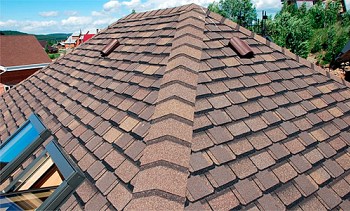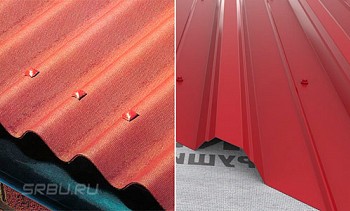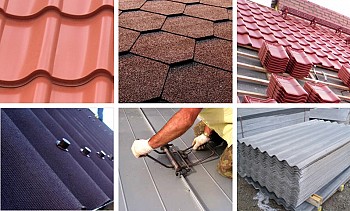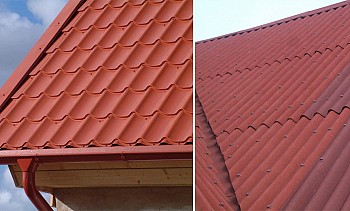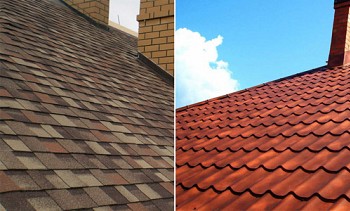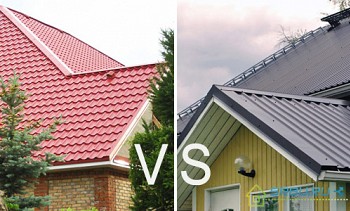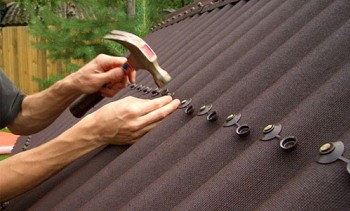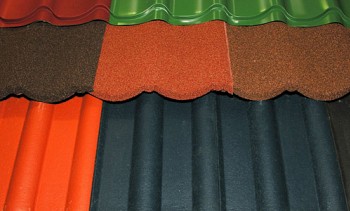Modern roofing materials are beautiful and durable, no one will argue. However, the good old slate also does not lie on store shelves. After all, it is very cheap, it is not afraid of fire, and it has quite good other technical characteristics. For the roof, only wave slate is used, the dimensions of which allow covering almost any roof with a minimum of waste. The main thing is that the slope of its slope should be at least 12 degrees. It is about the dimensions of the wave and flat slate that will be discussed in this article.
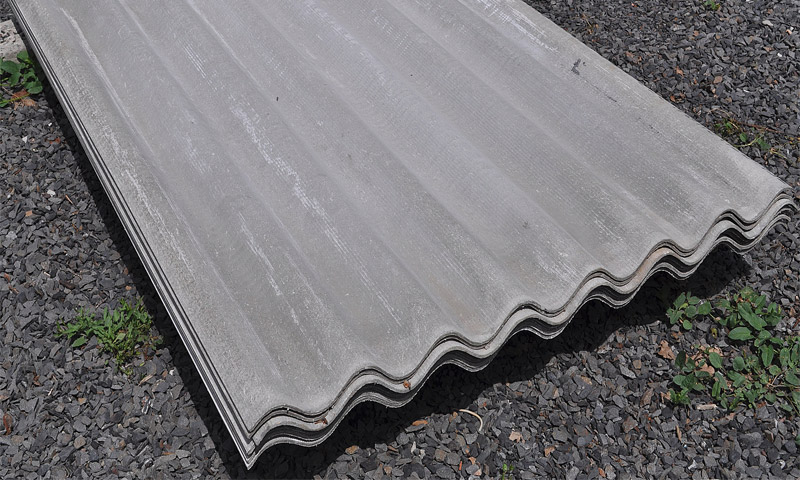
Content:
Varieties of slate sheets and their main parameters
There are 2 types of slate:
- Wave;
- Flat.
Wave slate may consist of:
- 5 waves;
- 6 waves;
- 7 waves;
- or 8 waves.
Flat slate for roofs is not very suitable. As a rule, it is used for wall cladding or installation of partitions in farm buildings.
Slate sheets with a wavy profile (consisting of five, six, seven or eight waves) are produced according to GOST 30340-95. However, some manufacturers make this coating according to their own specifications (technical specifications). This is allowed, but in this case, the dimensions of the wave slate sheet may differ from the standard ones.
The main dimensions of slate sheets include the following:
- The length and width of the sheet;
- sheet thickness;
- distance between crests of adjacent waves (wave step);
- wave crest height.
According to GOST, there are only two brands of corrugated slate:
- Slate brand 40/150. The step of its wave is 15 centimeters, and the height of the crest of the wave is 4 centimeters.
- Slate brand 54/200. The step of the wave is 20 centimeters, the height is 5.4 centimeters.
In addition to wave sizes, slate may also differ in the type of profile. The profile is divided into the following types:
#1. A unified profile with the abbreviation HC is the most economical material. Waste when using it is the smallest. It is often used as a roof for residential buildings.
Sheet Size:
- Width - 1,125 meters;
- length - 1.75 meters.
#2. The profile is ordinary, abbreviated IN.
It has an average sheet size:
- Width - 0.68 meters;
- length - 1.12 meters.
#3. The reinforced profile, abbreviated as WU, has a large thickness (8 millimeters). Therefore, it is mainly used for industrial facilities.
Sheet Size:
- Width - 1 meter;
- length - up to 2.8 meters.
Detailed dimensions of the corrugated slate grades:
| Options | Nominal size of profile sheets | Limit deviations, mm | Sheet weight, kg | |
|---|---|---|---|---|
| 40/150 | 54/200 | |||
| Length L mm | 1750 | 1750 | ±15 | - |
| Width B, mm: | ||||
| 6 wave sheet | - | 1125 | +10, -5 | 26,0 | 35,0 |
| 7 wave sheet | 980 | - | +10, -5 | 23,2 |
| 8 wave sheet | 1130 | - | +10, -5 | 26,1 |
| Thickness t, mm | 5,8 | 6,0; 7,5 | +1,0; -0,3 | - |
| Wave height: | ||||
| ordinary h, mm | 40 | 54 | +4, -3 | |
| overlapping h1 mm | 40 | 54 | +4, -5 | |
| overlapping h2 mm | 32 | 45 | +4, -6 | |
| Width of overlapping edge b1, mm | 43 | 60 | ±7 | |
| Width of overlapping edge b2, mm | 37 | 65 | - | |
| Wave step S, mm | 150 | 200 | - | |

Sizes of various types of slate
Seven and eight waves - optimal, as experience has shown
For the roof of a summer house or a small house (up to two floors), this slate is most often purchased. After all, the useful area of the sheets in him is not very different from their full area. Because the standard overlap, comprising one or two waves, is small in comparison with the overall size. By the way, for the convenience of overlapping, the slate waves located at the edge have slightly different sizes than medium waves. GOST allows this.
Both of these types of slate have in common the height of the wave crest (4 centimeters), its pitch (15 centimeters), and the sheet thickness (5.2 or 5.8 millimeters). These parameters must comply with GOST 30340-95.
The remaining dimensions of the slate sheet are various.
Let's start with dimensions 7 of the wave slate:
- Full area - 1,715 square meters;
- usable (real) area - 1,336 square meters;
- weight - 23 kilograms;
- length - 1.75 meters;
- width - 0.98 meters;
One slate sheet with eight waves has the following parameters:
- Area (full) - 1,978 square meters;
- real area (with an overlap of 16 centimeters) - 1.57 square meters;
- weight - 26.1 kilograms;
- length - 1.75 meters;
- width - 1.13 meters;
Five and six waves - more suitable for production
These types of slate often cover various premises for industrial needs, for example, warehouses. But in private construction, it is unprofitable to use them. The fact is that the size of the 8 wave slate is exactly the same as that of the 5 wave slate. As a result, taking into account the overlap, the difference between the total and the real roof area is too great. As a result, we get a significant cost overrun.
The thickness of this roofing material is about 7.5 millimeters. The thicker slate (7.5 millimeters) breaks much less when bent and does not collapse so much when hit and loaded. And it can withstand negative temperatures two times lower than thin slate.
At 6 wave slate, the size is slightly different. Its standard sheet has the following dimensions:
- Length - 1.75 meters;
- width - 1,125 meters;
- wave step - 20 centimeters;

Slate flat - popular for cladding and fencing
The thickness of the sheets of flat slate can be from 8 to 20 millimeters. A sheet of flat slate can have the following dimensions:
- Length - 3 meters, width - 1.5 meters;
- length - 2 meters, width - 1.5 meters;
- length - 1.75 meters, width - 1.13 meters;
- length - 1.5 meters, width - 1 meter.
However, sheets with a length of 1.75 and a width of 1.13 meters are most popular. Their most popular thickness is 10 millimeters (a sheet weighs 40.1 kilograms), 8 millimeters (a weight of 30.5 kilograms) and 6 millimeters (a weight of 21.2 kilograms).

How to calculate the right amount of slate
We measure the roof along the length, and then divide this number by the width of the slate sheet. Having taken one-tenth of the overlap, we find out how many sheets we need for one row. And the distance from the base of the roof ridge to its lower overhang should be divided by the length of the slate sheet. Here we add not 10, but 13 percent for the overlap. Rounding - here you have the number of rows. Just in case, always buy a couple of sheets more than you calculated.

